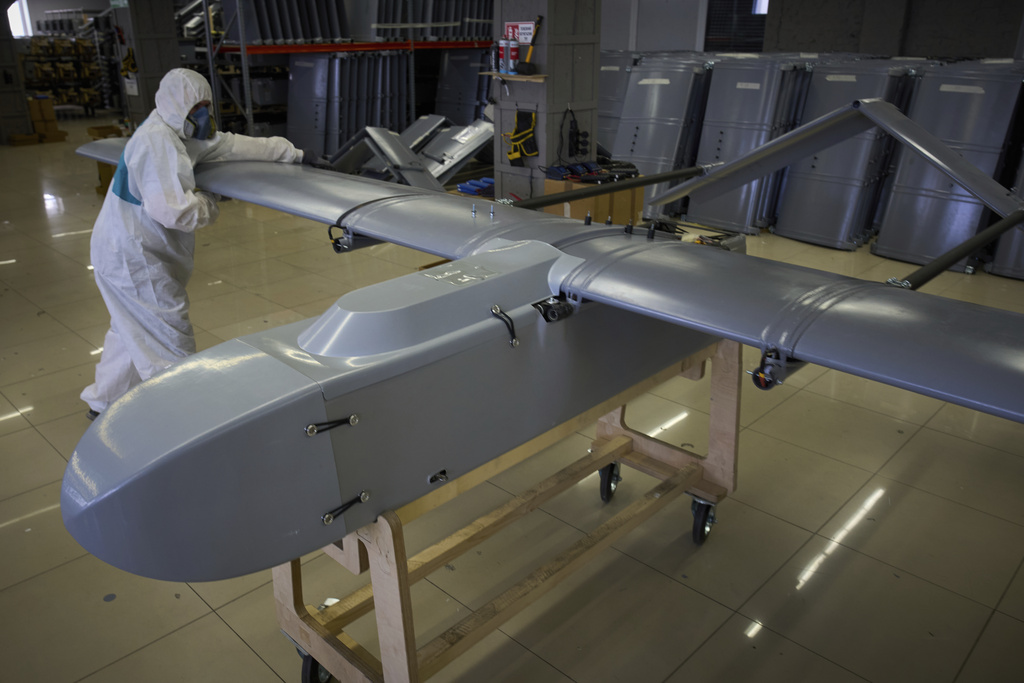Swarm Strategy: The Future of Deterrence in Eastern Europe

Ukraine, Poland, and Lithuania are building a new kind of defense — one that relies not on tanks, but on autonomous drones and real-time technological superiority.
The Post-Mobilization Era: the World Has Encountered a New Reality of Warfare and Is Developing New Formats of Deterrence.
After more than three years of Russia’s full-scale war against Ukraine, Eastern Europe is rapidly transforming its security concept. Instead of classic defense scenarios like NATO’s “deeply echeloned” maneuvers, countries on the eastern flank are shifting to mobile, technological, cost-effective, yet lethal deterrence – through the mass use of combat drones.
Ukraine, Poland, and Lithuania – as the core of a new initiative – are already working on a joint architecture for deterring Russia based on autonomous unmanned platforms. This approach is seen not only as a response to the current war but also as a long-term counter to the Russian threat in conditions where the risk of a frozen, yet unresolved, conflict remains high.
Ukrainian Experience: Will Combat Drones Become the New “Nuclear Deterrence”?
Since 2022, Ukraine has developed unique expertise in systematic drone warfare: notably in the maritime domain (strikes on Russia’s Black Sea Fleet), strategic operations (attacks on Russian oil refineries and airbases), and tactical operations (UAVs on the frontlines). This experience is recognized by the West as a breakthrough in modern military thinking.
According to NATO estimates, the monthly number of FPV drone strikes on the Ukrainian front in 2024–2025 reached 50,000, with the effectiveness of destroying armored vehicles exceeding 40%. Ukraine has managed to replace scarce artillery with drones, reduce the burden on air defense through kamikaze drones targeting enemy rear logistics, and create a new culture of warfare.
Polish-Lithuanian Initiative: The “Swarm Strategy” Takes the Stage
Poland and Lithuania, recognizing the inevitability of a new phase of Russian expansion – whether in the form of hybrid threats or a direct attack on the Suwałki Corridor – have decided to invest not only in conventional armaments but also in “cheap strategic deterrence”: drone swarms on the border and at sea.
The goal is to create thousands of autonomous, partially controlled, or semi-autonomous drones capable of attacking military columns, logistics, and warehouses in real time. Poland has already allocated over €100 million for a new military innovation program and established cooperation with Ukrainian manufacturers.
Lithuania, for its part, is developing a concept of an aerial “slow-motion mine” on border territories: thousands of small drones that can be deployed in minutes in case of a threat.
Will the Unmanned Shield of the Balto-Black Sea Alliance Become a Reality?
Since the start of Russian aggression, Poland, Ukraine, and Lithuania have significantly deepened military cooperation, particularly within the framework of the joint “Lithuanian-Polish-Ukrainian” initiative, the Lublin Triangle, and trilateral exercises. Now, this cooperation is moving into the realm of technological deterrence.
Plans are in place to create joint centers for unmanned systems, which will include Ukrainian UAV manufacturers with combat experience, Polish funding platforms and components and Lithuanian infrastructure for hosting drones and training operators.
The key idea is to build not an army of tanks but an army of drones along the entire line of confrontation with Russia – from the Black Sea to the Baltic Sea.
The U.S. Position on Participation in the Initiatives Shows Cautious Enthusiasm
Washington is observing the initiatives of Kyiv, Warsaw, and Vilnius with interest but also caution. On one hand, the U.S. supports the development of technological deterrence – the Pentagon acknowledges that drones have become an “asymmetric advantage” for allies in Europe.
In 2024–2025, the Pentagon funded the supply of FPV-type drones to Ukraine and launched the “Replicator” program for accelerated production of autonomous systems for partners. However, the U.S. is wary of the new drone militarization strategy potentially escalating tensions with Moscow or destabilizing NATO’s policies.
Hence, the support comes with conditions: an emphasis on defensive use, control over export technologies, and monitoring of cyber risks.
A Smoldering Frozen War: How to Deter Russia After a Pause
Even if the war in Ukraine enters a conditional frozen phase – due to an agreement, exhaustion, or diplomatic pressure – the Russian threat will not disappear. The Kremlin has a historical habit of using ceasefires to regroup its forces. This is why Poland, Ukraine, and Lithuania are preparing for a “post-war war” – when the front is formally halted, but strategic risks only increase.
In this context, combat drones are not just a tool for striking but an element of constant pressure on the enemy’s vulnerabilities. Their mobility, relative affordability, and autonomy enable sustained combat readiness under limited budgets. This is critical when Western military aid decreases or shifts to other conflicts.
The concept of deterrence in the 21st century is changing. Traditional tanks and air defenses are giving way to UAV swarms that are cheaper, faster, and do not require the deployment of armies. Ukraine, Poland, and Lithuania demonstrate that even in the shadow of a major war, an effective security architecture can be built based on technology, a will for self-defense, and mutual trust.
This is Eastern Europe’s new strategy – not waiting for a strike but keeping the enemy in constant fear of invisible wings on its horizon.
Dmytro Levus, foreign policy expert, analyst at kyiv-based United Ukraine Think Tank